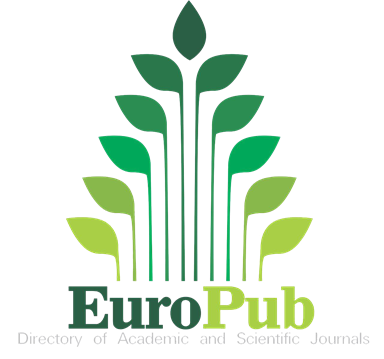Vegetative propagation of native fruit species of páramo Thibaudia floribunda and Cavendishia bracteata by cuttings
Propagación vegetativa de frutales nativas del páramo Thibaudia floribunda y Cavendishia bracteata por medio de estacas
DOI:
https://doi.org/10.15446/agron.colomb.v35n1.61796Keywords:
naphthalene acetic acid, rooting, Ericaceae (en)ácido naftaleno acético, enraizamiento, Ericaceae (es)
Downloads
Cavendishia bracteata and Thibaudia floribunda (Ericaceae) are wild fruit shrubs native to the Andes region. This study aimed to characterize the rooting potential of basal and apical cuttings using naphthalene acetic acid (NAA) in different concentrations (0, 200, 500, or 1,000 mg L-1). In C. bracteata, the cutting position on the branch affected its sprouting and rooting, with apical cuttings presenting the best performance with auxin application. The rooting of cuttings was more successful in C. bracteata than in T. floribunda. NAA applications between 200 to 500 mg L-1 were more suitable for the propagation of C. bracteata due to the higher percentages of rooting and shoot production. For propagation of T. floribunda, the use of apical cuttings without the application of auxins is recommended. Adventitious roots in cuttings of both species were originated from parenchyma cells of the stem.
Cavendishia bracteata y Thibaudia floribunda (Ericaceae) son arbustos frutales silvestres nativos de los Andes. El objetivo de este estudio fue caracterizar el potencial de enraizamiento de las estacas basales y apicales utilizando ácido naftaleno acético (ANA) en diferentes concentraciones (0, 200, 500 o 1.000 mg L-1). En C. bracteata, la posición de la estaca en la rama afectó su brotación y enraizamiento, las estacas apicales presentaron el mejor rendimiento con aplicación de auxina. El enraizamiento de estacas tuvo más éxito en C. bracteata que en T. floribunda. Aplicaciones de ANA entre 200 a 500 mg L-1 fueron más adecuados para la propagación de C. bracteata debido a los mayores porcentajes de enraizamiento y la producción de brotes. Para la propagación de T. floribunda, se recomienda el uso de estacas apicales sin la aplicación de auxinas. Las raíces adventicias en estacas de ambas especies se originaron a partir de células del parénquima del tallo.
References
Aparicio, A., M. Pastorino, A. Martinez-Meier, and L. Gallo. 2009. Vegetative propagation of Patagonian cypress, a vulnerable species from the subantarctic forest of South America. Bosque 30(1), 18-26. Doi: 10.4067/S0717-92002009000100004
Baldini, E. 1992. Arboricultura general. Mundi-Prensa, Madrid, Spain. Biasi, R., G. Marino, and G. Costa, 1990. Propagation of hayward (Actinidia deliciosa) from soft and semi-hardwood cuttings. Acta Hortic. 282, 243-250. Doi: 10.17660/ActaHortic.1990.282.31
Blakesley, D. 2013. Auxin metabolism and adventitious root initiation. pp. 143-154. In: Davis, T.D. and B.E. Haissig (eds.). Biology of adventitious root formation. Springer, New York, USA.
Braha, S. and P. Rama. 2016. The effects of indol butyric acid and naphthalene acetic acid of adventitious root formation to green cuttings in blueberry cv. Vaccinium corymbosum L. Int. J. Sci. Res. 5(7), 876-879. Doi: 10.21275/v5i7.ART2016324
Burgos, A., P. Cenoz, and J. Prause. 2009. Efecto de la aplicacion de auxinas sobre el proceso de enraizamiento de estacas de dos cultivares de mandioca (Manihot esculenta Crantz). Revista UDO Agricola 9(3), 539-546.
Da Costa, C., M.R. de Almeida, C.M. Ruedell, J. Schwambach, F.S. Maraschin, and A.G. Fett-Neto. 2013. When stress and development go hand in hand: main hormonal controls of adventitious rooting in cuttings. Front. Plant Sci. 4, 1-19. Doi: 10.3389/fpls.2013.00133
De Klerk, G.J., W. van der Krieken, and J.C. de Jong. 1999. The formation of adventitious roots: new concepts, new possibilities. In Vitro Cell. Dev. Biol. Plant. 35(3), 189-199. Doi: 10.1007/s11627-999-0076-z
Duran-Casas, S., C. Veloza Suan, S. Magnitskiy, and H.O. Lancheros. 2013. Evaluation of uva camarona (Macleania rupestris Kunth A.C. Smith) propagation with air layering. Agron. Colomb. 31(1), 18-26.
Druege, U., P. Franken, and M.R. Hajirezaei. 2016. Plant hormone homeostasis, signaling, and function during adventitious root formation in cuttings. Front. Plant Sci. 7, 1-14. Doi: 10.3389/fpls.2016.00381
Echeverri, A. and J. Lazaro. 2009. Conozcamos y usemos el Mortino. 3rd ed. Ed. Corantoquia, Medellin, Colombia.
Fahn, A. 1985. Anatomia vegetal. Ed. Piramide, Madrid, Spain.
Garcia, H. 1975. Flora medicinal de Colombia. Instituto de Ciencias Naturales, Universidad Nacional de Colombia, Bogota, Colombia.
Hartmann, H.T., D.E. Kester, F.T. Davies, and R.L. Geneve. 2010. Plant propagation, Principles and practices. 8th ed. Prentice Hall, Upper Saddle River, NJ, USA.
Lagos-Burbano, T., H. Ordonez, H. Criollo, S. Burbano, and Y. Martinez. 2010. Descripcion de frutales nativos de la familia Ericaceae en el altiplano de Pasto, Colombia. Rev. Colomb. Cienc. Hortic. 4(1), 9-18. Doi: 10.17584/rcch.2010v4il.1221
Lewis, D., M. Ramirez, N. Miller, P. Vallabhaneni, W. Ray, R. Helm, B. Winkel, and G. Muday. 2011. Auxin and ethylene induce flavonol accumulation through distinct transcriptional networks. Plant Physiol. 156(1), 144-164. Doi: 10.1104/pp.111.172502
Lodama, K.E., E.S. du Toit, J.M. Steyn, H.T. Araya, G. Prinsloo, C.P. du Plooy, and P.J. Robbertse. 2016. Improving rooting of Lobostemon fruticosus L. cuttings with delayed auxin treatment. South Afr. J. Bot. 105, 111-115. Doi: 10.1016/j.sajb.2016.01.005
Lopez, C.R., L.J. Navarro, and B. Caleno. 2016. Productos forestales no maderables de Corpochivor. Una mirada a los regalos del bosque. Corporacion Autonoma Regional de Chivor, Bogota, Colombia.
Ludwig-Muller, J. and J. Cohen. 2002. Identification and quantification of three active auxins in different tissues of Tropaeolum majus. Physiol. Plant. 115, 320-329. Doi: 10.1034/j.1399-3054.2002.1150220.x
Luteyn, J. 1983. Ericaceae: Part I. Cavendishia. Flora Neotrop. Monogr. 35, 1-289.
Luteyn, J. and P. Pedraza-Penalosa. 2008. Neotropical blueberries: the plant family Ericaceae. En: www.nybg.org/bsci/res/luT2/; consulted: november 2016.
Magnitskiy, S., G. Ligarreto, and H. Lancheros. 2011. Rooting of two types of cuttings of fruit crops Vaccinium floribundum Kunth and Disterigma alaternoides (Kunth) Niedenzu (Ericaceae). Agron. Colomb. 29(2), 197-203.
Murray, J.R., M. Concepcion Sanchez, A.G. Smith, and W.P. Hacket. 2013. Differential competence for adventitious root formation in histologically similar cell types. pp. 99-110. In: Davis, T.D. and B.E. Haissig (eds.). Biology of adventitious root formation..Springer, New York, USA.
Noor-un-nisa, M., A. Noman, M.A. Baloch, and Q. Chachar. 2013. Influence of naphthalene acetic acid (NAA) on sprouting and rooting potential of stem cuttings of Bougainvillea. Sci. Int. (Lahore) 25(2), 299-304.
Olival, C. and A. Lopez. 2005. Efecto del acido naftalenacetico en el enraizamiento de estacas de Myrciaria dubia (Hbk.) Mc Vaugh, Camu, Camu. Folia Amazonica 14, 43-49. Doi: 10.24841/fa.v14i2.146
Pedraza-Penalosa, P., N. Salinas, A. Virnig, and W. Wheeler. 2015. Preliminary phylogenetic analysis of the Andean clade and the placement of new Colombian blueberries (Ericaceae, Vaccinieae).PhytoKeys 49, 13-31. Doi: 10.3897/phytokeys.49.8622
Plazas, E.A. 2015. Tamizaje fitoquimico preliminar, evaluacion de la actividad antioxidante in vitro y toxicidad de seis especies de Ericaceas colombianas. Rev. Cuban. Plant. Med. 19(2), 182-199.
Puertas-Mejia, M.A., S. Rincon-Valencia, and J.C. Mejia-Giraldo. 2015. Screening of UVA/UVB absorption and in vitro antioxidant capacity of Bejaria aestuans, Cavendishia pubescens and Cavendishia bracteata leaf extracts. Res. J. Med. Plant. 9, 435-441. Doi: 10.3923/rjmp.2015.435.441
Rojas-Nossa, S.V. 2013. Asociacion entre el robo de nectar y las caracteristicas florales en una comunidad montana de los Andes colombianos. Ecosist. 22(2), 107-112. Doi: 10.7818/ECOS.2013.22-2.16
Rudall, P. 2007. Anatomy of flowering plants: An introduction to structure and development. 3rd ed. Cambridge University Press, New York, USA. Doi: 10.1017/CBO9780511801709
Salinas, N.R. and J. Betancur. 2005. Las ericaceas de la vertiente pacifica de Narino, Colombia. Acta Biol. Colomb. 10(1), 98-99.
Sass, J. 1951. Botanical microtechnique. 2nd ed. Iowa State College Press, USA. Doi: 10.5962/bhl.title.5706
Shimizu-Sato, S., M. Tanaka, and H. Mori. 2009. Auxin-cytokinin interactions in the control of shoot branching. Plant Mol. Biol. 69(4), 429-435. Doi: 10.1007/s11103-008-9416-3
Stuepp, C.A., I. Wendling, S.J. Trueman, S.H. Koehler, and K.C. Zuffellato-Ribas. 2017. The use of auxin quantification for understanding clonal tree propagation. Forests 8(1), 27. Doi: 10.3390/f8010027
Toro, J. and G. Venegas. 2002. Flora de los paramos y bosques Alto andinos del noroccidente medio de Antioquia. Corporacion Autonoma Regional de Antioquia, Corantioquia, Medellin, Colombia.
Vargas, E. 2002. Guia ilustrada de las plantas de las montanas del Quindio y de los Andes centrales. Universidad de Caldas. Manizales, Colombia.
Veloza, C., S. Duran, S. Magnitskiy, and H. Lancheros. 2014. Rooting ability of stem cuttings of Macleania rupestris Kunth A.C. Sm., a South American fruit species. Int. J. Fruit Sci. 14(4), 343-361.Doi: 10.1080/15538362.2014.897889
How to Cite
APA
ACM
ACS
ABNT
Chicago
Harvard
IEEE
MLA
Turabian
Vancouver
Download Citation
License
Copyright (c) 2017 Agronomía Colombiana

This work is licensed under a Creative Commons Attribution-NonCommercial-ShareAlike 4.0 International License.
© Centro Editorial de la Facultad de Ciencias Agrarias, Universidad Nacional de Colombia
Reproduction and quotation of material appearing in the journal is authorized provided the following are explicitly indicated: journal name, author(s) name, year, volume, issue and pages of the source. The ideas and observations recorded by the authors are their own and do not necessarily represent the views and policies of the Universidad Nacional de Colombia. Mention of products or commercial firms in the journal does not constitute a recommendation or endorsement on the part of the Universidad Nacional de Colombia; furthermore, the use of such products should comply with the product label recommendations.
The Creative Commons license used by Agronomia Colombiana journal is: Attribution - NonCommercial - ShareAlike (by-nc-sa)

Agronomia Colombiana by Centro Editorial of Facultad de Ciencias Agrarias, Universidad Nacional de Colombia is licensed under a Creative Commons Reconocimiento-NoComercial-CompartirIgual 4.0 Internacional License.
Creado a partir de la obra en http://revistas.unal.edu.co/index.php/agrocol/.




















